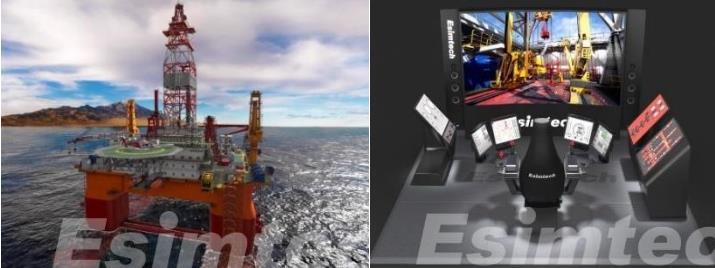In the high-stakes world of oil and gas drilling, ensuring safety and efficiency is paramount. This is where drilling simulators come in, offering a safe and controlled environment to train crews for real-world scenarios. But how much does this preparedness cost?
Drilling Simulator Costs: A Breakdown
Oil and gas drilling simulators are complex pieces of equipment, and their price reflects that. Unlike the consumer-grade racing simulators you might find at home, these professional trainers replicate entire drilling rigs, complete with realistic controls and downhole conditions.
Here's a glimpse into the cost factors:
Fidelity: Simulators with higher fidelity, meaning a more realistic experience, naturally come with a steeper price tag. These advanced models can include features like motion platforms and haptic feedback for a truly immersive experience.
Functionality: The range of scenarios a simulator can handle impacts the cost. Basic trainers might focus on well control procedures, while high-end models can simulate the entire drilling process, from well planning to completion.
Number of Crews: Simulators designed to train multiple crew members simultaneously will be more expensive than single-user models.
A Wide Range, But Not Out of Reach
While pinpointing an exact cost is difficult due to customization options, the price range for oil and gas drilling simulators can span from hundreds of thousands to millions of dollars.
However, there's some good news. Recognizing the importance of training, some simulator manufacturers are offering flexible licensing options. This allows companies to access the technology without the upfront cost of a full purchase.
Beyond the Price Tag: The Value Proposition
The cost of a drilling simulator needs to be weighed against the value it brings. Here's how these trainers can provide a return on investment:
Safety: By allowing crews to practice emergency procedures in a safe environment, simulators can significantly reduce the risk of accidents on drilling rigs.
Efficiency: Well-trained crews can complete drilling operations faster and more efficiently, leading to cost savings.
Reduced Downtime: Simulators help identify and address potential problems before they occur on a real rig, minimizing costly downtime.
The Final Well
Oil and gas drilling simulators are a significant investment, but their contribution to safety, efficiency, and cost reduction makes them a valuable tool for oil and gas companies. By exploring various options and considering the long-term benefits, companies can find a simulator solution that fits their budget and training needs.









Share this page with your family and friends.